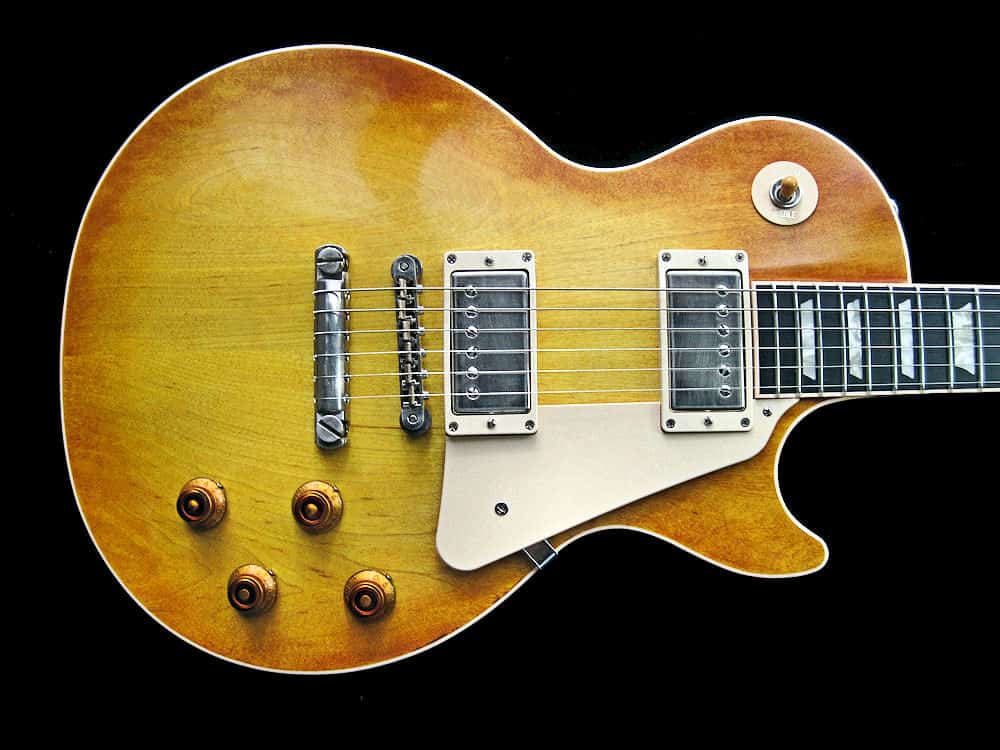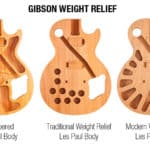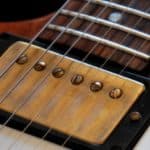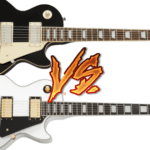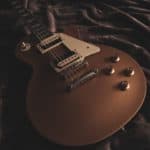Ah, the golden years…
Everybody talks about these Les Paul models as if they were the holy grail. And maybe they are.
But do you really know what’s really different from one to the next?
I didn’t, so I decided to figure it out.
’57 Les Pauls were the first to use humbuckers, had a thick neck, and Gold top finishes. ’58s introduced the sunburst and thinned the neck. ’59s hit the sweet spot with their neck profile, bigger frets, hotter pickups, and heavily figured tops. The ’60s kept the specs from the ’59s but thinned the neck even further.
Here I’ll lay out the main specs of every one of these models and then we’ll see them all compared next to each other. That will surely expose the variation between them.
Before starting our analysis, it’s important to note that in the early production stages of all the major guitar brands there were great variances between instruments manufactured only days apart.
This means that “yearly specs” are sometimes an average or maybe the results of sampling a few pieces and claiming them representative of their period.
Main characteristics of the ‘57 Les Paul

The ‘57 Les Paul is famous for being the first production year that ditched the once standard P90 pickups and replaced them with humbuckers. These new pickups were designed by Seth Lover in 1955.
As well as the introduction of the humbuckers, ‘57 was the last year that Les Pauls were finished with gold tops.
This year is also well known for the “Black Beauty” finish in the Les Paul Customs. This model came mostly with 3 humbuckers, but a small batch was produced with the traditional 2 pickup configuration.
As something to remark, ‘57 necks were very thick.
Main characteristics of the ‘58 Les Paul
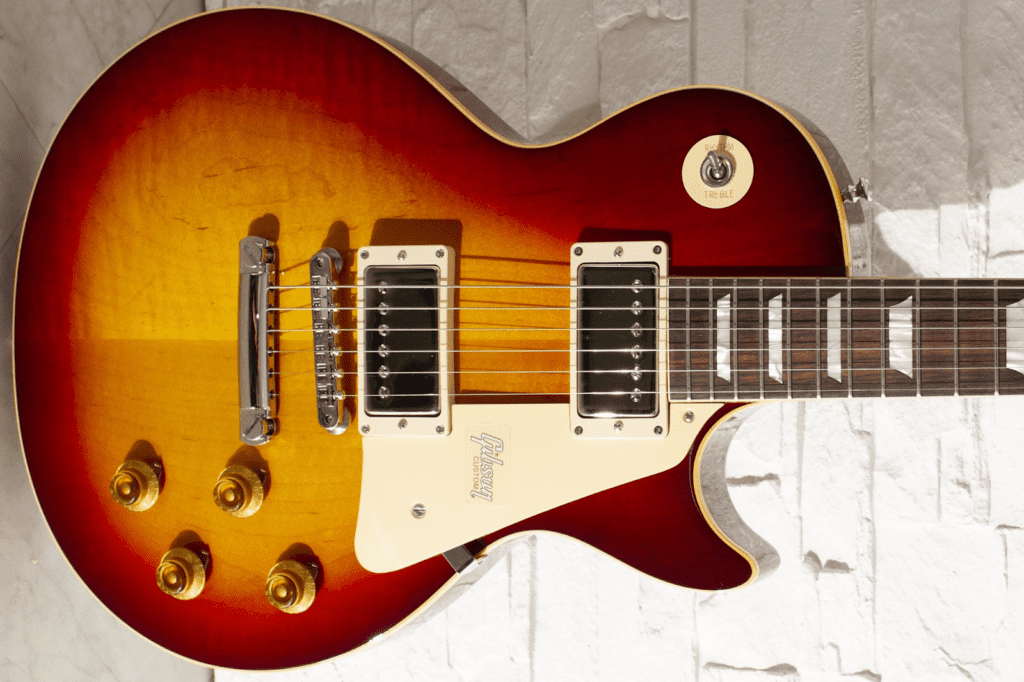
In 1958 the Les Paul Standard model was introduced. This new configuration retained many things from the ‘57 Gold top.
The thing that set the ‘58 apart was the new cherry-red sunburst finish that became a classic with the years.
This new finish started the flame-top arms race without even knowing it. Heavily patterned tops started to pop here and there, but they’re reported to become even more common in the subsequent years.
The “Standard” line was then priced above the Gold top, but below the Custom.
There are not many other changes in specs at this moment. The neck profiles continued to be thicker than today standards, the pickup configuration remained the same
Main characteristics of the ‘59 Les Paul
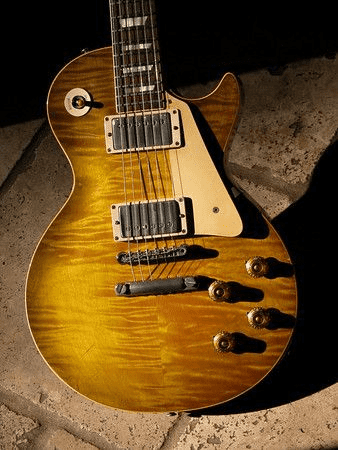
The ‘59 Standard model is considered by many as the holy grail of Les Pauls. And this is verified by the price tags on all of the surviving instruments from this age.
The thing is that in 1959 not many things change, but the RIGHT things did, improving the feel and playability of the instrument as many claim.
First of all, the necks became thinner, to the point that they were deemed “just right” by a lot of players.
Then, the frets were replaced with bigger ones, making it easier on players that used a lot of string bends in their playstyle.
Also, ‘59 pickups were wound a bit hotter on average.
Finally, and as I mentioned earlier, in this year the flame tops started being more prominent, and some maintain that they were the best ever.
As you can see, all these small changes make for an overall better instrument that a lot of people started desiring.
Main characteristics of the ‘60 Les Paul
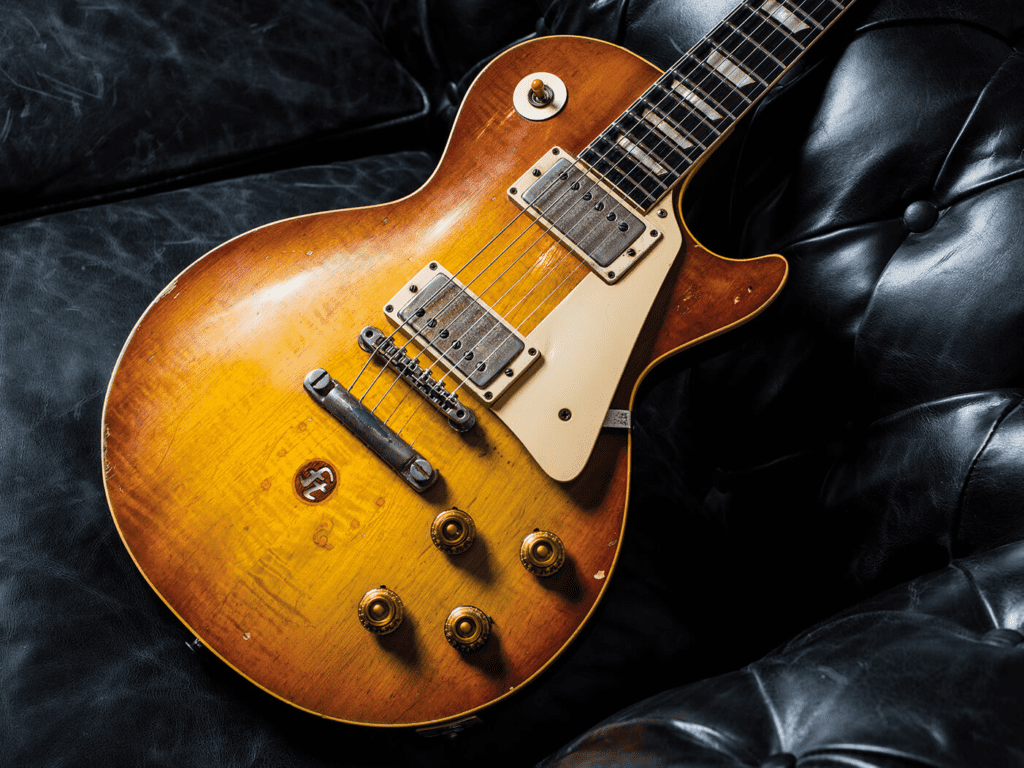
In 1960 the Les Paul’s neck was made even slimmer. This characteristic is a big polarizing factor between fans.
Some prefer the ‘50s thick, chunky neck profiles, while others root for the ‘60s thin awesomeness.
This profile was even thinner than the ‘59. Another reason that makes that model the sweet spot for a lot of connoisseurs.
As for other changes, there are not many reported. One mentionable innovation is that the paint recipe was replaced with a new one that didn’t fade so easily. This new tint was less translucent and a bit more orange.
The ‘57, ‘58, ‘59, & ‘60s Les Pauls compared
Until now we laid out the main differences between the most popular vintage Les Paul models.
Next, we’ll look at the results of this research side by side to make the distinctions clearer.
As a disclaimer, this is by no means a scientific investigation, and hence we’ll not even care to determine the size of the differences between models.
This is just a broad comparison and a table of rules of thumb so you can have a general idea about the early history of this instrument.
We encourage you to further research the details and measures of every one of these aspects and more if you’re deeply invested in the topic.
So, let’s see what we have here:
| Specs | ‘57 | ‘58 | ‘59 | ‘60 |
| Finish | Gold top | Sunburst | Sunburst | Sunburst |
| Neck profile | Thicker | Thick | Thin | Thinner |
| Top | Maple | Flamed maple | Heavily flamed maple | Flamed maple |
| Pickup output | Vintage | Vintage | Hotter | Hotter |
| Frets | Smaller | Smaller | Bigger | Bigger |
This vaguely summarizes maybe the most important years for Gibson.
It’s amazing to see how small incremental changes ended up in the making of one of the most iconic guitars ever designed and built.
What is the best Les Paul reissue model for you?
There have been lots of reissues during the years, and every single one of them had its nuances.
They’re mostly the interpretation of the custom shop of the different “eras” of the instrument.
If you’re looking to add one of these to your collection, we recommend you take the time to try them out if that’s a possibility for you.
But here are a few of our recommendations:
- If you prefer big necks, look for a ‘57 Gold top
- If you adapt better to thinner neck profiles, try out a ‘60
- If you play mostly rhythm in not so overdriven tones, maybe go for a ‘57 or ‘58
- If you are a lead player and you prefer heavier tones, pick up a ‘59

Hello there, my name is Ramiro and I’ve been playing guitar for almost 20 years. I’m obsessed with everything gear-related and I thought it might be worth sharing it. From guitars, pedals, amps, and synths to studio gear and production tips, I hope you find what I post here useful, and I’ll try my best to keep it entertaining also.

